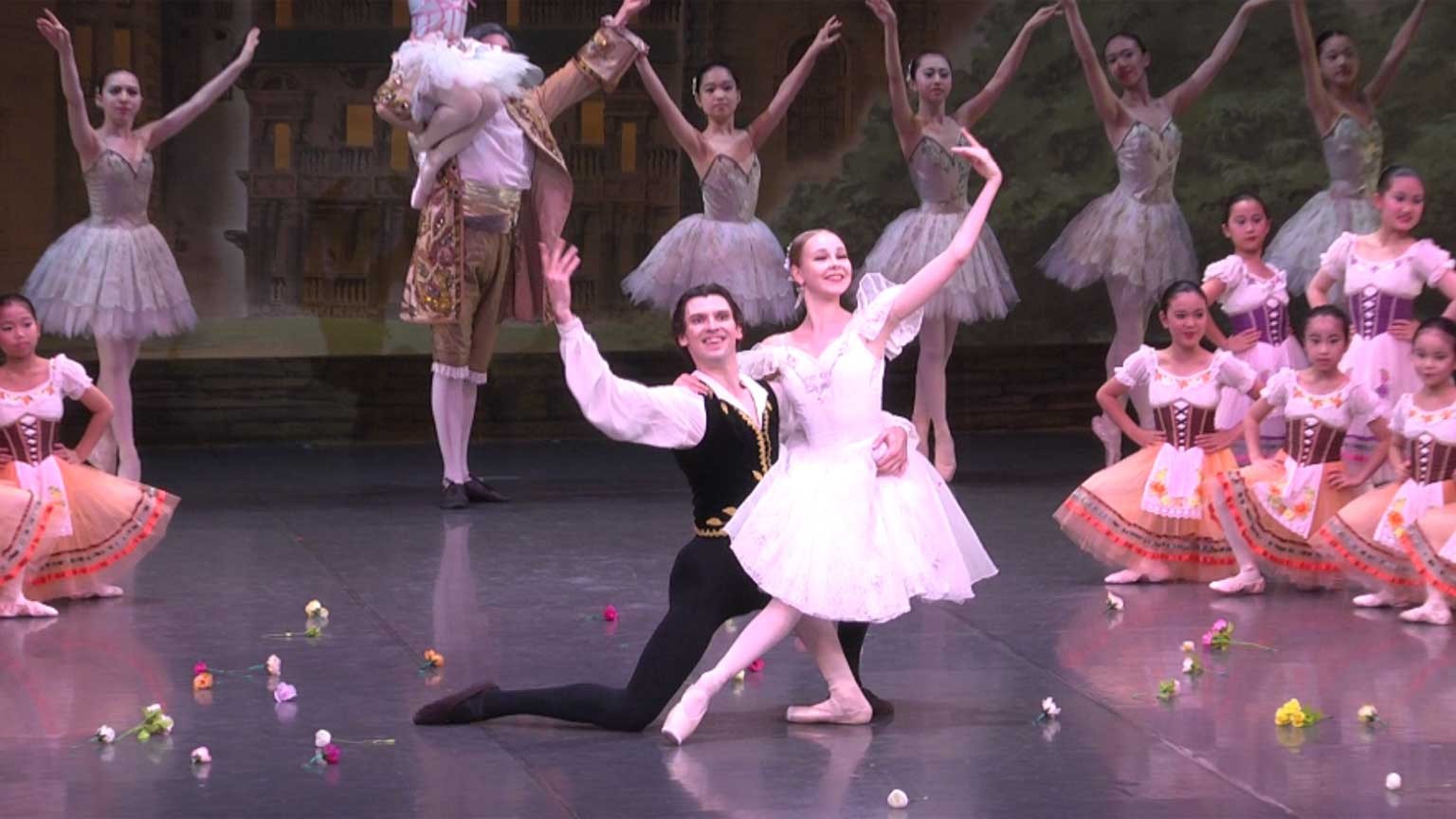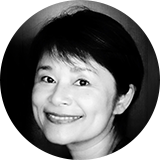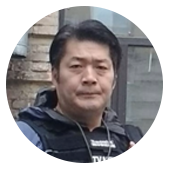A warm welcome in Kyoto
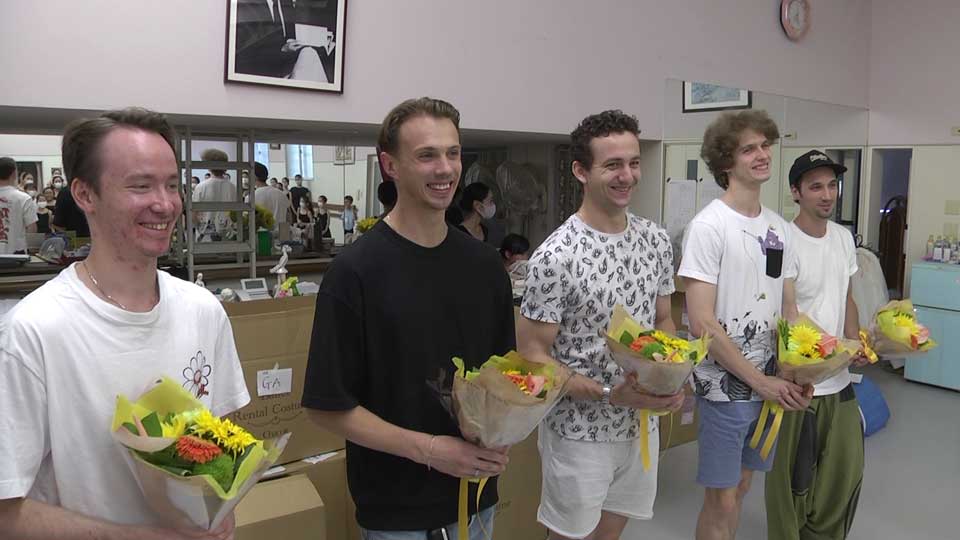
It was peak summer when the Ukrainian visitors arrived in Kyoto after touring the country for two weeks. They were warmly welcomed by a party made up of dozens of young Japanese dancers and overseen by 84-year-old Terada Michiko, whose passion and drive had made the trip possible. The two groups would spend 10 days together, studying and rehearsing for a special performance.
Ballet bridges countries
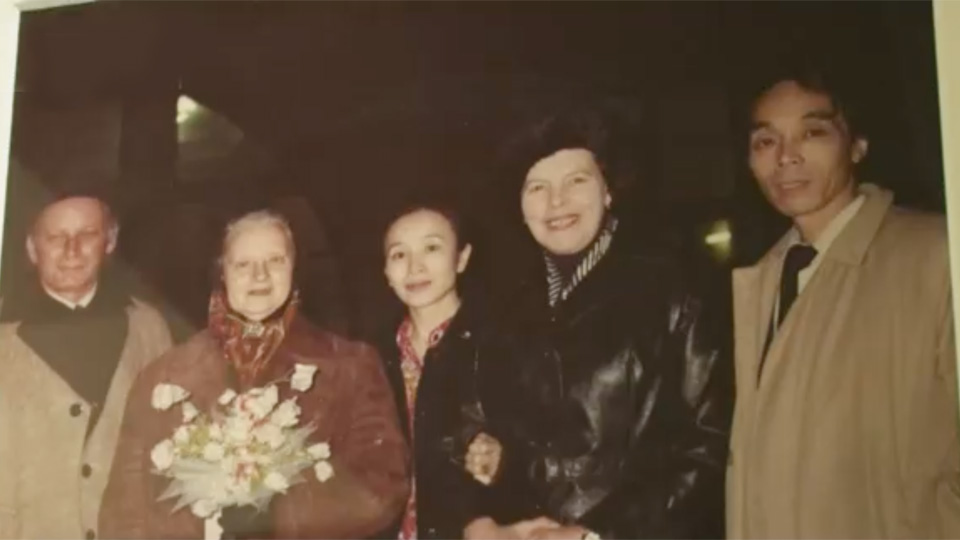
Michiko has deep-running ties to Ukraine. She's been taking students there to train since 1975, and has witnessed much of its turbulent modern history — first under Soviet rule, and then as an independent, democratic country — up close and in person.
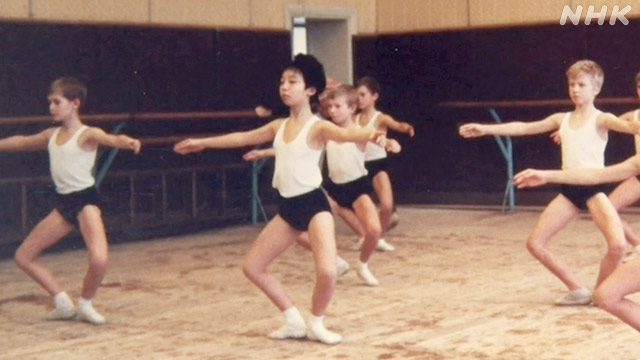
Michiko sent her son Nobuhiro to study ballet in Kyiv when he was just 11. He graduated top of his class and joined the prestigious National Ballet of Ukraine, eventually becoming a soloist.
Nobuhiro now calls Kyiv home. The threat posed by regular Russian attacks hasn't persuaded him to leave or dulled his commitment to the local ballet scene. Instead, he's busied himself by helping young dancers find temporary host ballet companies or schools elsewhere in Europe. Last December, he was appointed to the National Ballet's top post, artistic director, and in August he joined seven dancers from the theater on the trip to Kyoto.
Although Michiko worries about her son's safety, she's immensely proud that he's supporting a community she loves.
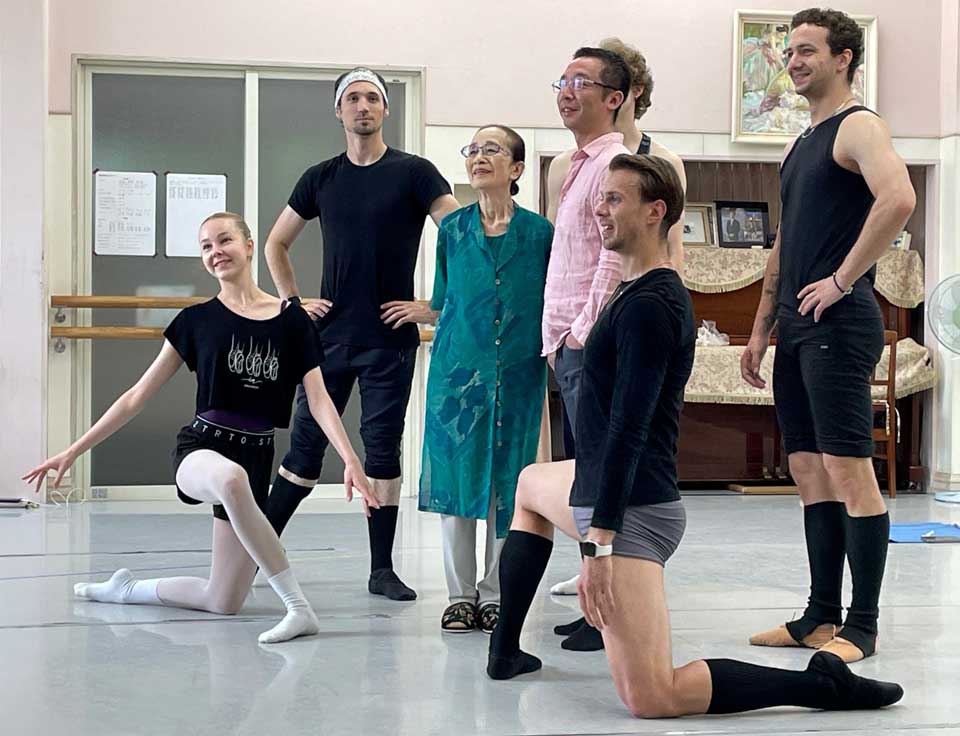
Dancing with the stars
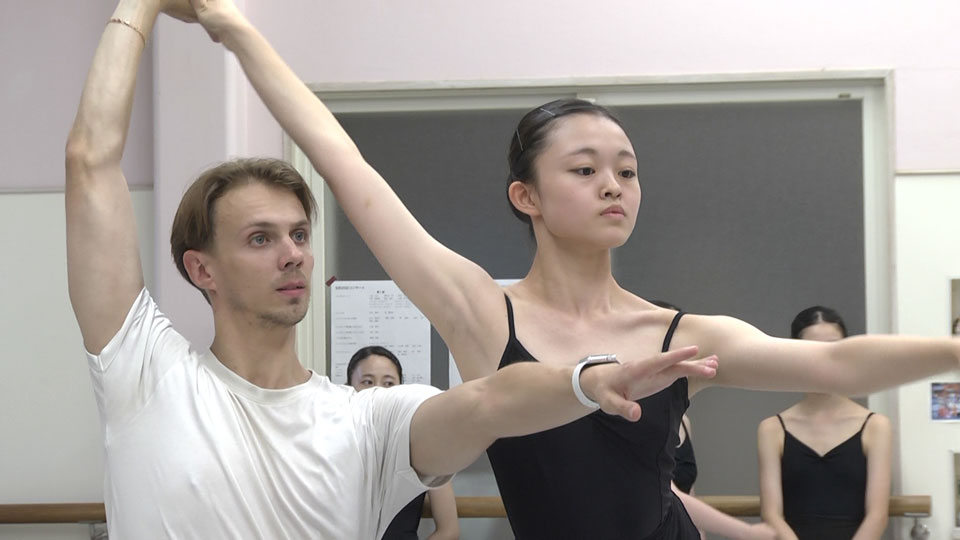
Tomoda Aoi, 16, was chosen from among more than 100 students to dance with one of the Ukrainian stars, Oleksandr Habelko. It was her first pas de deux, or dance for two, with a professional. She said it was nerve-wracking to be lifted so high, "but the view from above was beautiful."
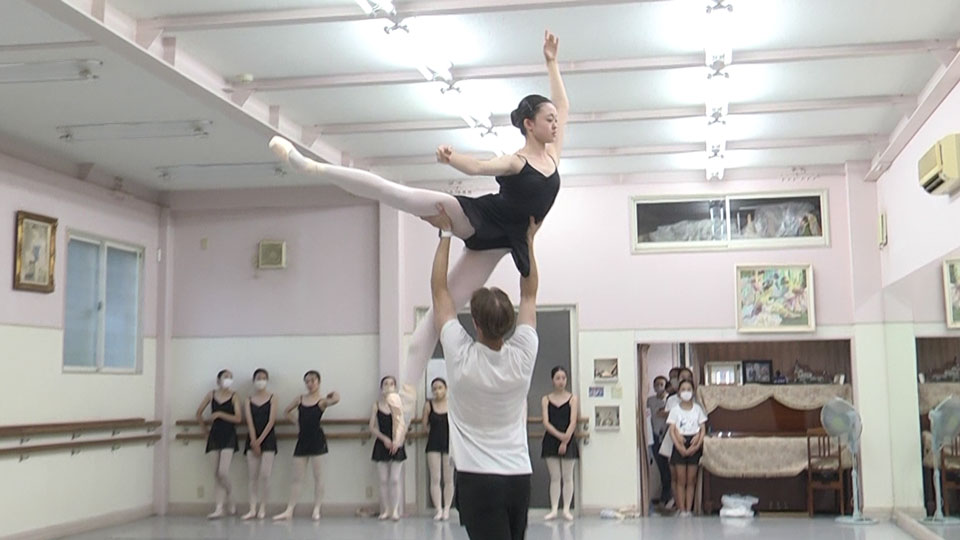
For the final performance, the two groups rehearsed a Ukrainian folk dance called the hopak. Although the Japanese students learned the dance at the school, they weren't quite ready for the mesmerizing array of jumps and spins executed by the Ukrainian dancers in their demonstration.
Habelko said it was a joy to watch the Japanese boys try to pull off the same moves afterwards. "I really love dancing with the children. They take the best out of hopak They dance very openly and soulfully. It's very cool."
A shared experience of war
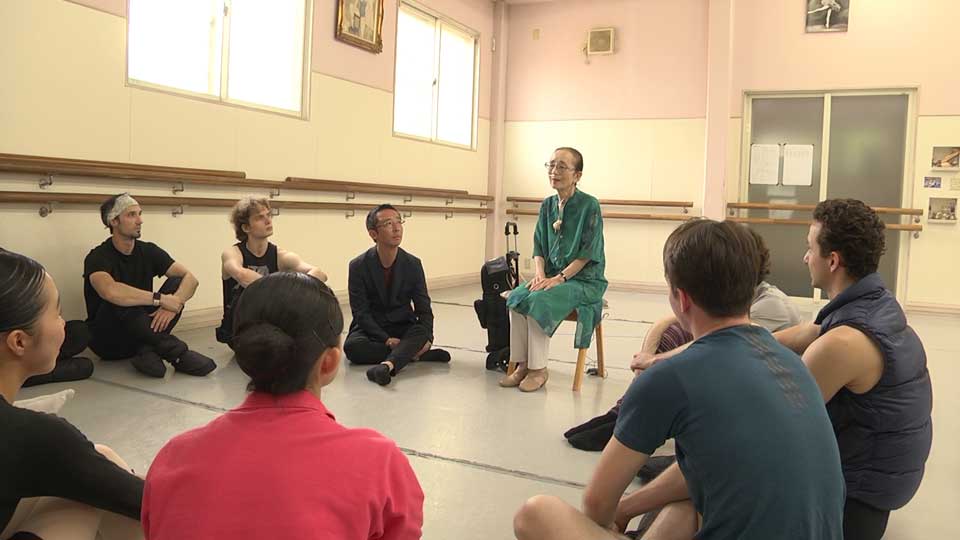
For Michiko, the aim of the collaboration wasn't just to hone her students' dance skills. She also wanted them to learn an important life lesson — the value of peace. It was a lesson she learned the hard way when she lost her father soon after he was drafted to fight in World War Two.
Habelko has experienced similar grief. The pain was still raw when he told the students how it felt to lose his 43-year-old uncle, who had died in fighting just two weeks earlier, leaving behind two young children.
The personal accounts were deeply affecting for Tomoda and the other children. "The dancers have been going through so much hardship," she said. "I don't understand everything they're experiencing, but I feel I'm starting to understand little by little."
A time and place to reflect
Nobuhiro wanted to give the Ukrainian dancers a chance to decompress during their visit. So he took them to see the Gozan-no-Okuribi, an annual tradition where people light giant bonfires on six mountains surrounding the ancient city to guide the souls of lost loved ones to heaven. As the dancers watched, they offered silent prayers.
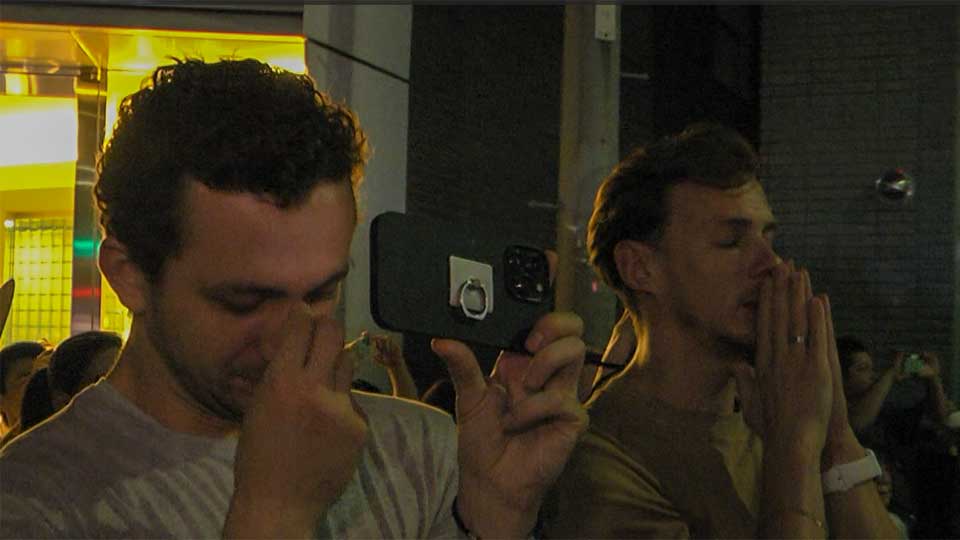
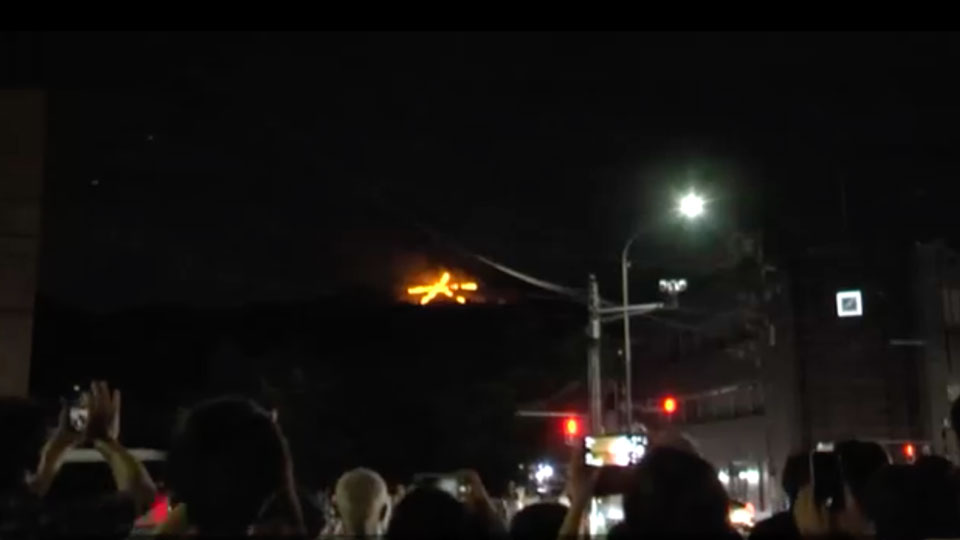
Nobuhiro also lent an ear to 23-year-old Danyil Paschuk, whose hometown Odesa had just been targeted by drones and missiles. Paschuk was shocked to learn the attack had completely destroyed the supermarket where his family often shopped. But he was more worried about his father Ruslin, who had been drafted a month earlier and sent to fight. Paschuk told Nobuhiro that he sent some photos from Kyoto and that his father replied, "Kyoto is so beautiful, I'd love to visit there with you one day."
A missile attack destroyed a theater in Chernihiv
On the day of the performance, there was more distressing news for the traveling Ukrainians. A missile attack had destroyed a theater in Chernihiv, north of Kyiv. It was especially upsetting for Habelko, who had danced there before.
Nobuhiro was shocked, but determined to keep the group focused on the task ahead. "The most important thing for me right now is to help the dancers keep performing as long as there are people who want to come to watch us."
A united performance
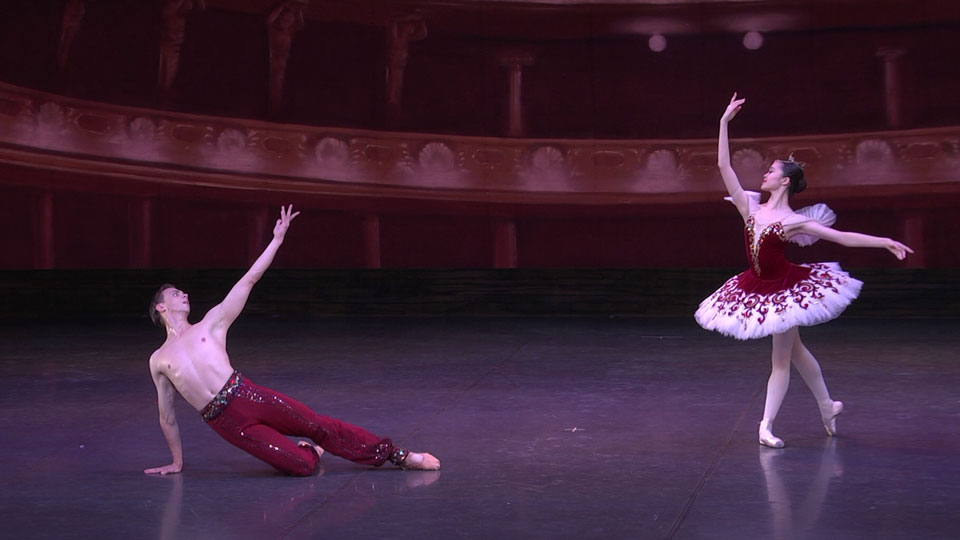
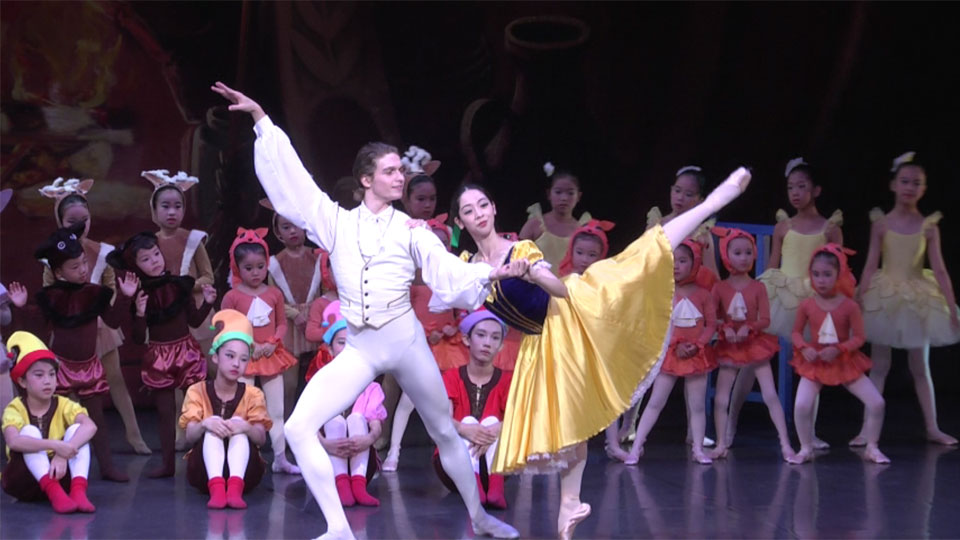
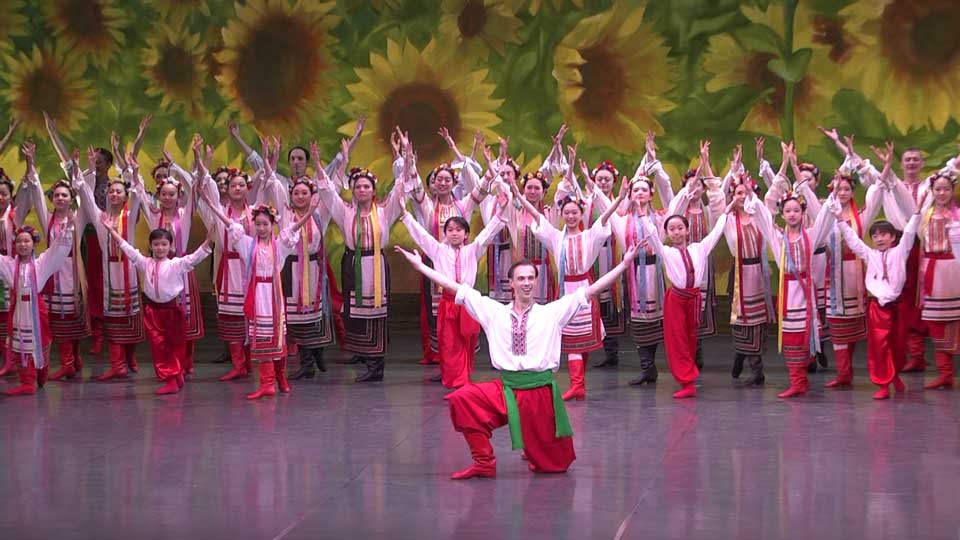
The show was a huge success. Tomoda's pas de deux with Habelko enchanted the crowd. The Ukrainians cheered from the wings as the school's youngest, some just 3 years old, strutted their stuff. And for the finale, the groups came together to perform the hopak.
"I want to cry," Habelko said after the show. "It's amazing. I will remember this forever."
Before the evening concluded, Michiko left the audience with a final message to ponder: "I pray for world peace through the ballet of the Ukrainians and the children, who are our future."
